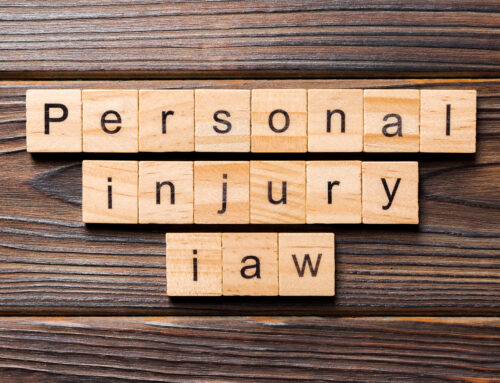When you receive personal injuries in any mishap caused by others, you may undergo medical treatments, replace lost or damaged property and miss work while you recuperate. Depending on your injuries, you may also suffer depression, physical pain and stress.
While you want fair compensation for personal injuries that weren’t your fault, working out a reasonable settlement before the statute of limitations expires benefits everyone by saving time, money and emotional stress. Since you also have to show resolve and willingness to go to court if necessary, you may wonder how to determine a dollars- and-cents total for your injuries and distress to get negotiations started.
Computing Damages Involves a Process
Since personal injury incidents occur on a daily basis, it’s not surprising that insurance companies and attorneys have developed procedures to tally the total worth of a personal injury claim. While these methods may vary, they generally involve adding together three categories of personal injury damages to come up with a definite amount for actual expenses and a subjective amount for pain and emotional issues.
Since one technique to put a cash value on pain and suffering involves multiplying the total medical expenses by a formula reflecting the severity of the injuries, medical special damages are calculated separately from other special damages.
Special Damages
This category includes all non-medical expenses incurred because of personal injury. It encompasses all property damage, such as replacing a totaled vehicle in a car accident, equipment being transported that was destroyed, or an expensive watch ruined in a slip-and-fall incident.
The classification also includes wages lost while you were hospitalized or recuperating at home, along with the value of sick leave or vacation days used during recovery. It can also calculate future earnings lost if you can no longer do the same job due to permanent disabilities.
Include and document any other costs resulting from the incident. For example, injuries sustained by a parent of an infant may necessitate the hiring of childcare.
Medical Special Damages
This group includes all bills related to medical treatments, such as ambulance transportation or medical emergency flights, emergency room services, hospital stays, individual doctor and radiology consultations, rehab facilities, medications and physical therapy sessions. With severe injuries and prolonged hospitalization, it can take time for all the bills to arrive so don’t settle with an insurance company before you know billing is complete.
Keep all medical expenses organized, itemized and documented. You also need to record two amounts for each statement. The first is the amount billed; the second is the actual payment made to the provider. Some insurance companies have discount agreements with their network of providers, and Medicare also requires contracts. Any formula for general damages is usually applied to the amount billed, but if the personal injury case goes to court, reimbursement is allowed only on the amount actually paid.
General Damages
Often called pain and suffering, this category attempts to determine a reasonable dollar amount for all the misery, disruption and trauma associated with the accident and injury. Because a starting figure is needed for negotiations, many lawyers and insurance adjusters use their personal system of multiplying total medical special damages by a number typically between 1.5 and five.
The basic premise of these systems is that sizable medical bills usually indicate more severe injuries and accompanying pain. Considerations influencing the multiplier might involve the length of recovery, the long-term effects of the injury, and any disfiguration or permanent disability that results. Minor injuries that heal without problems may use the low end of the scale while severe injuries with permanent disabilities may use a multiplier of five or higher.
Extenuating Factors May Affect Personal Injury Totals
Adding all three categories together provides an initial figure to use in a demand letter for compensation. However, other factors may make it advisable to adjust the figure up or down.
Strength of Your Case
Having strong evidence that the defendant was negligent, such as credible witnesses or a police report indicating the defendant broke a law, puts you in a forceful bargaining position. If some of the circumstances are questionable, however, you may want to keep the demands as reasonable as possible.
California’s Pure Comparative Fault Law
If your personal injury case goes to trial, the court or jury will assign a percentage of fault to you and the defendant under the state’s pure comparative fault law. For example, if you are deemed 5% at fault, you only receive 95% of the total damages awarded.
Since it is not always possible to predict a jury’s decisions, it is advisable to work toward a settlement before the trial begins.
Utilizing an Experienced Lawyer Can Make a Difference
Working with an attorney who has the ability to negotiate personal injury settlements not only takes a burden off your shoulders but also sends the message you have professional assistance on your side. At the Law Offices of Brent D. George, we offer a free assessment of your situation and advise you on the next steps to take. Call (805) 494-8400 today to book a consultation.







